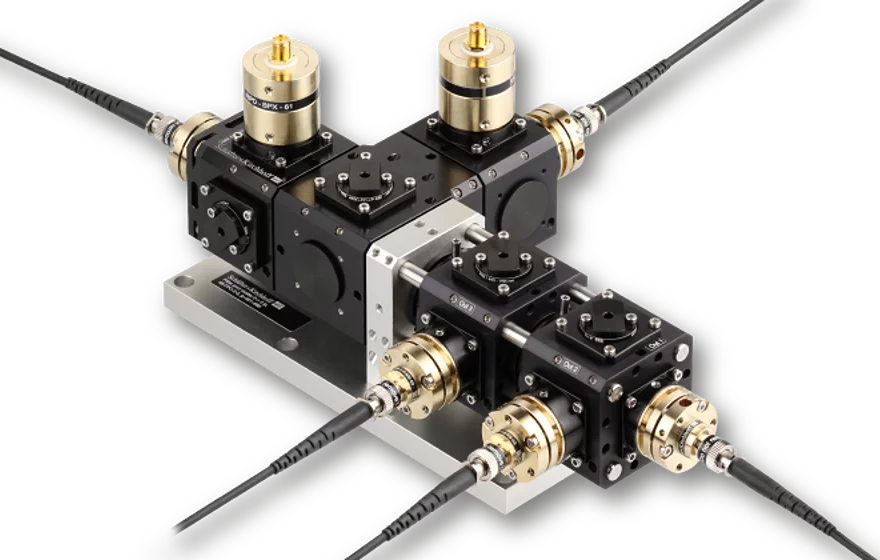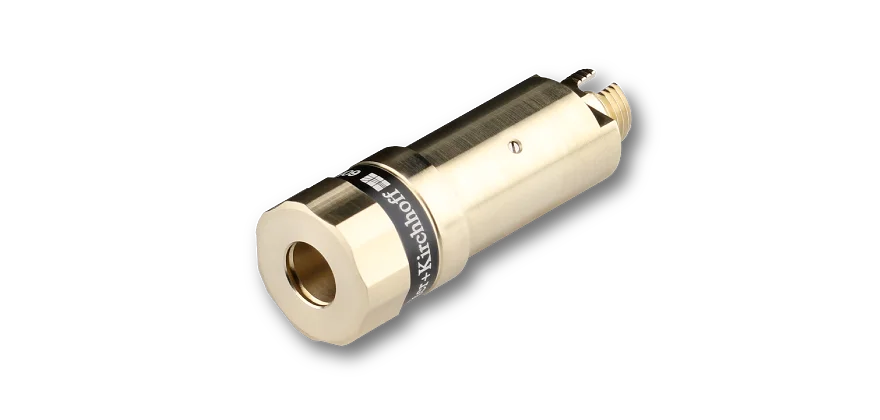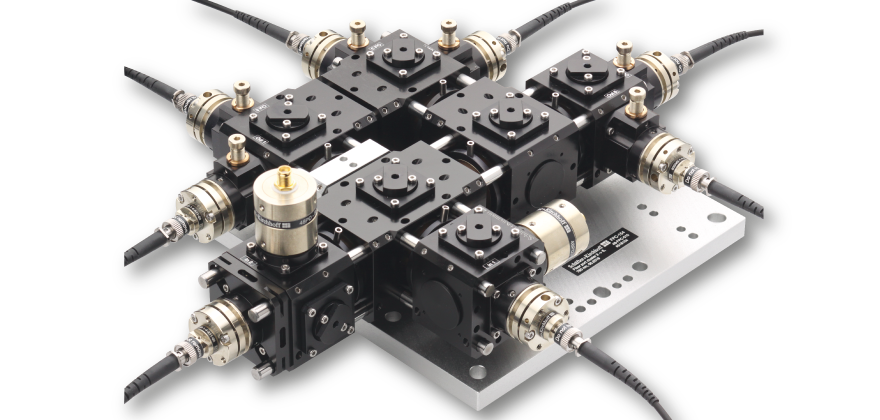The Fiber Port Clusters are compact opto-mechanical units that combine two fiber-coupled sources with differing wavelengths and then splits the combined radiation into multiple output fiber cables with high efficiency and variable splitting ratio.
Optical SetupThe two input ports are fiber-coupled to
PM fiber cables. Polarizers define the input polarization which is necessary for a long term stable splitting ratio.
Two photo diodes right after each input port allow for a continuous monitoring of the radiation. The two differing input sources are superimposed either by means of a dichroic mirror (long pass) or by a polarization beam splitter followed by a dichroic wave plate.
Subsequently, the radiation splitting is achieved by using a cascade of rotary half-wave plates in combination with polarization beam splitters. By use of the rotary half-wave plates, almost any desired splitting ratio can be achieved.
At the output ports further polarizers are placed in order to define the polarization at output of the system.
Fiber CouplersA fundamental component of a Fiber Port Cluster is the
Laser Beam Coupler, which is the input into the opto-mechanical unit collimating the input radiation and, finally, couples the radiation back into the polarization-maintaining fiber cables. The
stability of the total Fiber Port Cluster is determined by the
stability of the laser beam coupler.





